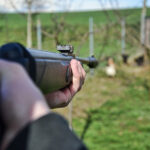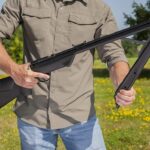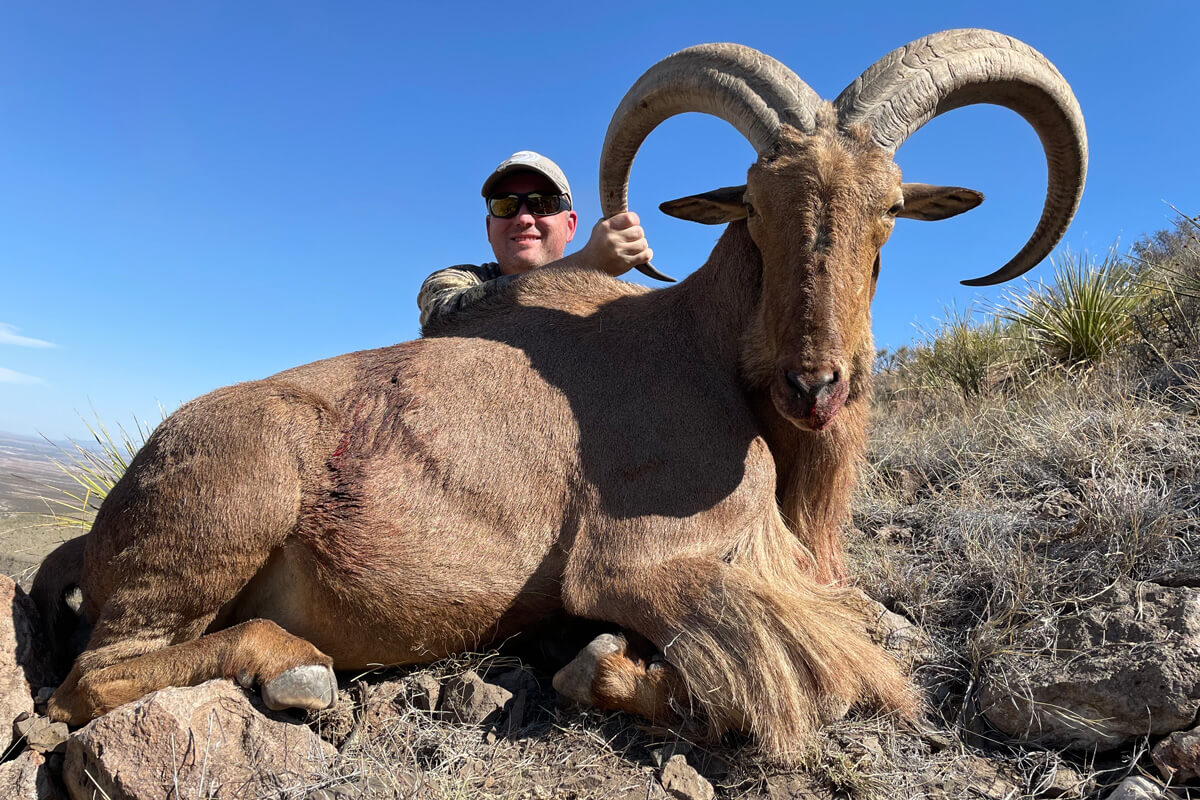
Aoudad sheep, or Barbary sheep as they are known through their native range of northern Africa, might not be the first species that a North American big game hunter thinks of when the subject turns to sheep hunting. But as Outdoor Sportsman Group digital guru Jeff Phillips (above) recently found out in the high altitude of West Texas, they are a big, tough animal that lives in inhospitable terrain while offering a unique hunting challenge that is readily accessible to many hunters who might not ever get to hunt the continent’s more classic sheep species. (Jeff Phillips photo)
While Texas is known for its brush-covered prairies and rolling Hill Country, not to mention the white-tailed deer that roam there by the millions, the Lone Star State has a surprising amount of mountainous terrain in the Trans-Pecos region tucked away in its southwestern corner. There, big desert mule deer roam, joined by the rare Carmen Mountain whitetail, javelinas, scaled quail, Gambel’s quail, Montezuma quail, and a few mountain sheep.
Wild sheep? In Texas? In a word, yes, since TPWD estimates that there are some 1,500 or so desert bighorn sheep in their state, the same rams that Jack O’Connor chased in Arizona and Mexico. And while they are as scarce as a 12-inch-deep snowstorm in downtown Dallas, a few tags are awarded each year through TPWD permit draws and raffles from conservation groups like the Texas Bighorn Society.
But that’s not all that gives Texas a claim to being a wild sheep state. Because there’s also another 5,000 or so aoudad sheep roaming the Lone Star State landscape, a handsome wild critter that O’Connor once hunted in their native mountains of northern Africa, a tale he chronicled in his story, “My Strangest Sheep Hunt.”
Jeff Phillips, Digital Editorial Director for Outdoor Sportsman Group, recently had a chance to live out his own dreams of sheep hunting like O’Connor once did, traveling to the West Texas mountains to hunt with High West Outfitters. What he found there was what O’Connor loved most — high terrain, the opportunity to glass never-ending mountains for miles, and at the end of the day, a chance to take a shot at a wild sheep.
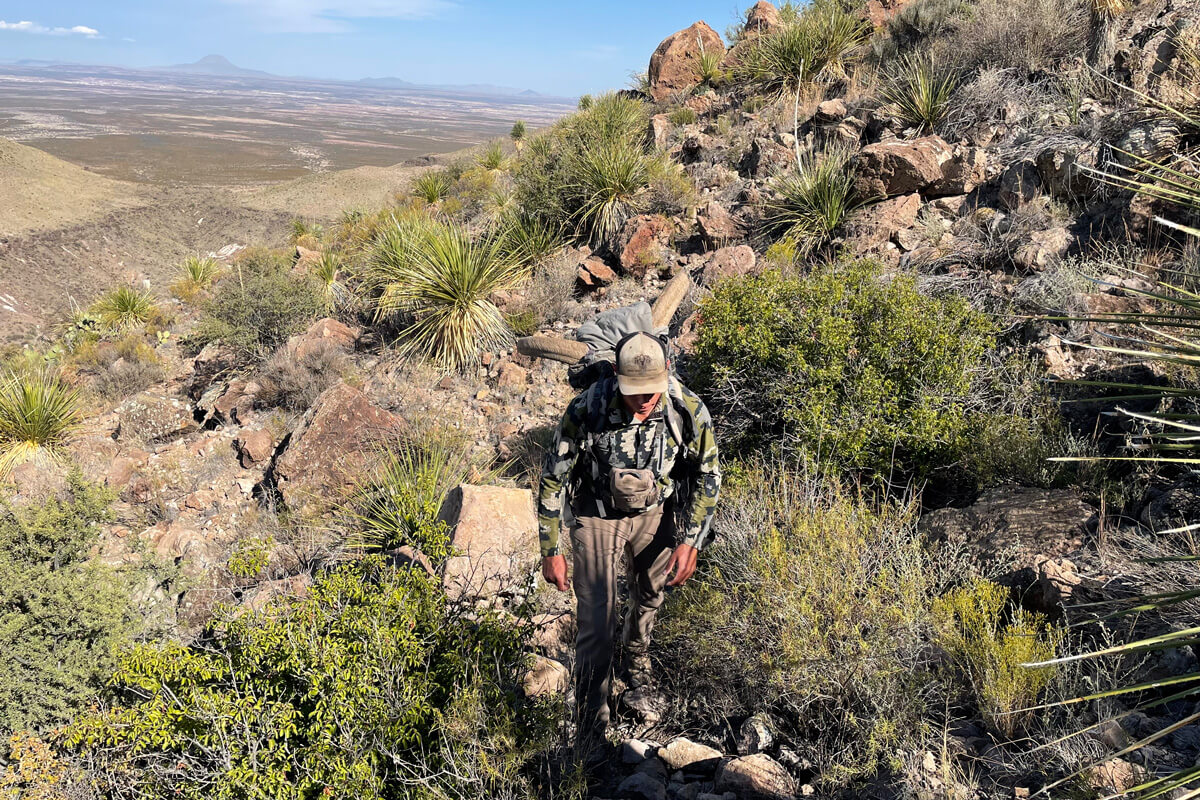
“Yeah, it was quite the experience,” said Phillips, who has a lifetime of hunting trips chasing whitetails in his native Oklahoma. “Let’s just say what I found surprised me. We were miles from the nearest highway, the terrain was rugged, and there were wild critters who had rarely seen a human being. Add in the sweeping vistas, the mix of desert winds and thunderstorms, and the ability to wrap my hands around the sweeping horns of an aoudad, and yeah, I’d say it was a real sheep hunt and then some.”
Hunting in the mountains between Valentine and Marfa, Phillips was chasing a sheep species that was first introduced to Texas in the late 1950s when the Texas Parks and Wildlife Department released some free-ranging aoudad in the Palo Duro Canyon area near Amarillo, a spot where public hunting permits for aoudad are still awarded by draw each fall.
Other aoudad introductions took place in other corners of the state, including in the Trans-Pecos region east of El Paso, and in nearby New Mexico. All of those introductions have cemented the aoudad’s presence in West Texas, to the financial prosperity of some and the biological chagrin of others concerned for the region’s native wildlife species, including the desert bighorn.
With the aoudad firmly entrenched in the West Texas landscape now, the handsome rams provide great “poor man’s sheep hunting” options for many, as well as a chance to see how certain rifle cartridges and bullets perform on the blocky critters that can weigh upwards of 350 pounds. In Phillips’ case, he was in camp to see how the new Remington Core-Lokt Tipped 6.5 Creedmoor round would perform versus the proven performance of the original Core-Lokt round, one of the most storied bullets in American hunting history.
Hunting at elevations ranging from 4,500 feet to 5,000 feet, Phillips — who is a reloading junkie and a long-range shooting aficionado — was anticipating shot opportunities as far as 600 yards. Phillips saw several good rams on his hunt, although some were in spots that not even O’Connor would have likely tackled. Eventually, he and his guide glassed up a group of four rams resting in the shade below a canyon rim. With visibility limited for the hunters and the heavy horned rams at a range of 1,000 yards or so, the guide took inventory and found one youngster, two mature trophies with horn length in the 32-inch range, and one tremendous ram.
After careful study of the surrounding terrain, the guide finally reasoned that he could quickly get Phillips within 700 yards or so of the bedded rams. But since Phillips and his 6.5 Creedmoor bolt-action rifle were good out to about 600 hundred yards, that wouldn’t completely solve their dilemma. They needed to make an even bigger move to close the distance without spooking the resting rams, but how?

Remembering the old hunting adage to trust your guide, Phillips didn’t have to be sweet-talked into Plan B, and he began to get excited about the prospects of sneaking through high-altitude desert air with the end goal of taking a trophy ram.
“Per the guide, trophy aoudad rams are 30-plus inches in horn length,” said Phillips. “This one was, we thought, about 33-plus inches, and I think the world record is something like 39 inches? And if I understand correctly, the same outfitter was on that particular hunt, so this was a ram that was about as good as they get.”
Even so, getting into position for a good shot was an ordeal that took some time to unfold as the autumn sun slowly advanced across the rough and tumble Texas terrain. Eventually, they were in position and patiently waiting to see how the game would play itself out.
“I set up on a large flat rock right on the edge of the canyon cliff. It was a long way down from that position but an absolutely beautiful view” said Phillips. “From this position, we could only see the heads of two of the four rams. Once in a while, each one would get up, stretch, turn around, and then lay back down. This went on for two hours.”
But in the thin air of the West Texas mountains, the swirling currents that afternoon made the waiting game even harder thanks to the constant threat of the hunter’s scent making its way to the noses of four rams a few hundred yards away. Given few other options, the hunter and his guide waited until the aoudad finally made the next move on the rocky chessboard.
After an interminable wait, all four rams finally got up and walked below some rocks. The problem at this point is that neither Phillips nor his guide could see any of them.
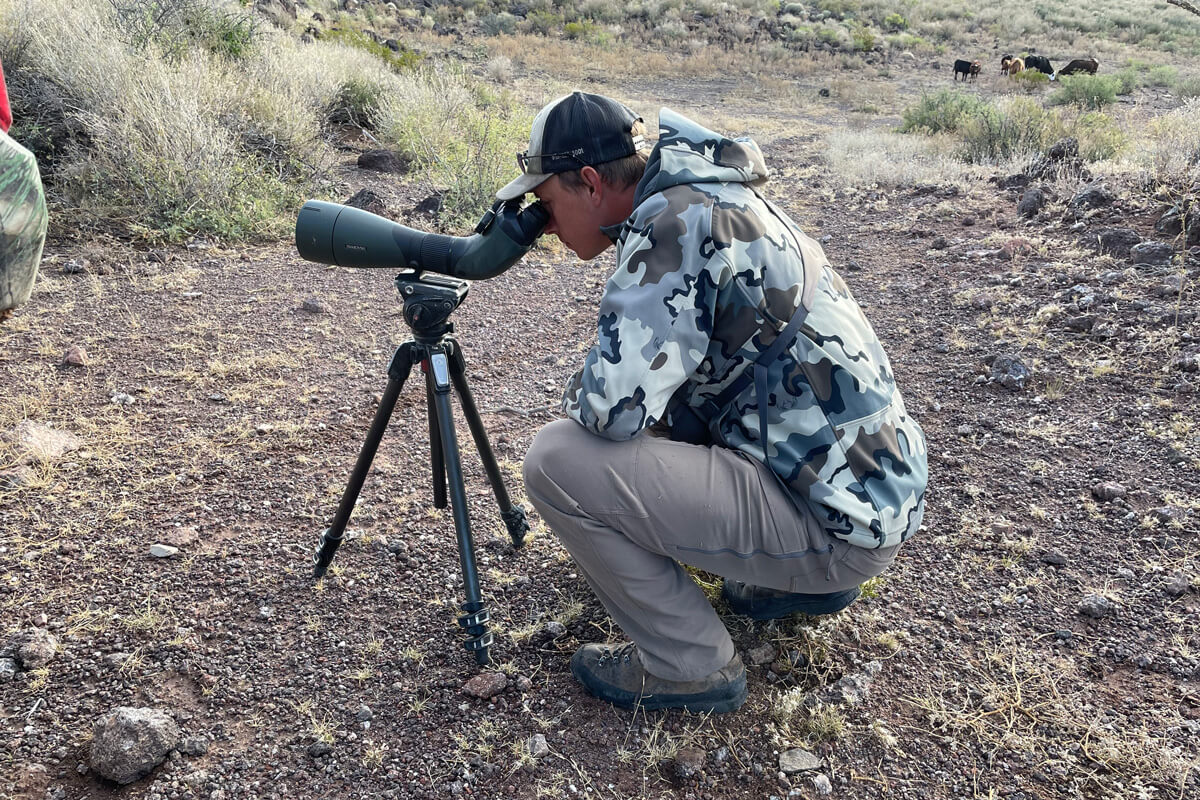
“Knowing there was a trail that ran along the side of the canyon, we figured there was a 50/50 chance they would walk down and away from us on the trail and offer a shot opportunity,” said Phillips. “As luck would have it, that’s what happened with the young ram appearing first. A few minutes later, one of the mature rams came into view down the same trail. And one by one, they slowly appeared as we predicted they might. The second and third rams were both shooters, but we let them walk, knowing somewhere out of view, a larger ram was lurking. With that seemingly taking forever, the fourth and largest ram finally came into view at 150 yards out. The guide stopped the ram, I took aim with the crosshairs, and the rest is history.”
Before the finality of that Core-Lokt round whistling downrange, there was still some high-altitude drama to unfold, however, when Phillips settled into his elevated sniper’s shooting position and readied for the shot. For starters, the shot angle wasn’t a common one for a Sooner State deer hunter accustomed to making shots from treestands and box blinds less than 100 yards away for a whitetail.
“The target ram I was after was quartering away when I finally shot,” said Phillips. “The shot placement, since I was elevated, was to the upper back of the right rib cage. When I squeezed the trigger, the ram immediately hunched up and ran to the left over a canyon rim’s edge and out of sight.”
But Phillips and his guide needn’t have worried, because the shot had drilled the big aoudad ram in the boiler room and it had run only about 80 yards downhill before falling just out of sight. Soon, Phillips was looking down on a 34-inch Texas aoudad ram.
In the end, Phillips found himself impressed, with the form of sheep hunting he was experiencing, with the trophy ram he gripped with his hands, with the beauty of the wild West Texas terrain, and with the performance of the newly designed Remington Core-Lokt Tipped round.
“Though I didn’t get the opportunity for a long shot — and it’s not that I was necessarily looking for one, since in big game hunting, the shorter, the better, right? — the bullet performed beautifully at 150 yards,” said Phillips.
“In other words, that proven Core-Lokt bullet-controlled expansion is still there,” he added. “Many hunters may never reap the improved ballistics of the new Core-Lokt Tipped bullets, but it’s there if needed.”
With a Golden Past, Remington’s Core-Lokt Aims for a Better Future
The Remington Core-Lokt bullet, dubbed “the deadliest mushroom in the woods,” has a storied history with North American hunters after getting its start in 1939.
Created at the end of the Great Depression and not long before the start of World War II, the Core-Lokt round — which is arguably the best-selling hunting ammunition ever made — was an economical everyman’s bullet that used a tapered copper jacket to mechanically constrict the solid lead core during the shot.
By doing that, as the bullet impacted its target, the round was locked to its core, preventing separation. That resulted in higher weight retention, produced deeper penetration into a buck or bull’s boiler room, and allowed for deadly accuracy, all at an easy-to-digest price per green-and-gold box.

First constructed in Bridgeport, Conn., the Core-Lokt round has been produced in Remington’s Lonoke, Ark. plant for nearly a half-century now. With the creation of the company’s Core-Lokt Ultra Bonded bullet in 2002 and the Remington Hypersonic Core-Lokt round in 2013, there was much to celebrate when the Remington Core-Lokt bullet reached its 75th birthday in 2014.
Today, as the iconic Core-Lokt brand pushes into its eighth decade of production, there’s even more to celebrate thanks to the new Core-Lokt Tipped round with greater velocity, improved ballistic coefficients, and significantly reduced bullet drop at 500 yards. With the advanced Big Green Polymer Tip now firmly in place in the round’s long and storied history, the Core-Lokt Tipped bullet still produces the same hard-hitting, big game animal stopping, deadly mushroom performance in the woods.
All while retaining the user-friendly price tag made famous during the days of FDR more than 80-years ago, even with the added bonuses of greater flight characteristics and sterling downrange accuracy, even for today’s hunters who continue to push the edge of the downrange envelope.
With the Core-Lokt round already owning the crown for knocking down the most bucks, bulls, and big game animals of any other hunting round in history, one can only wonder what the engineers and bullet makers at Remington will think of next as the iconic round pushes into the future and takes aim at its 100th birthday.











































